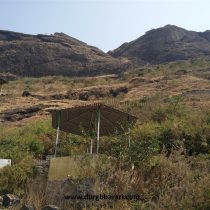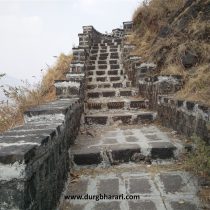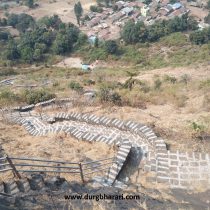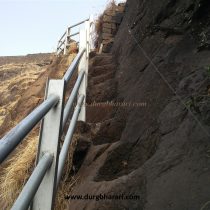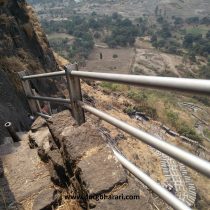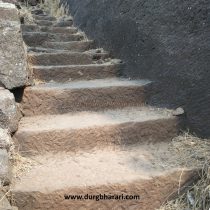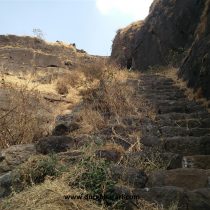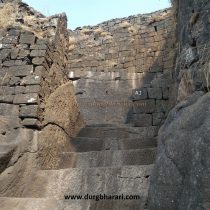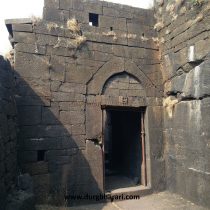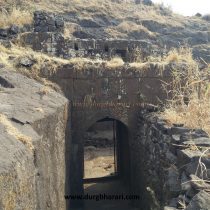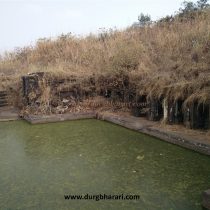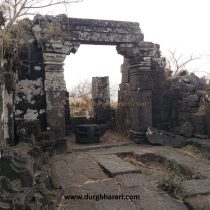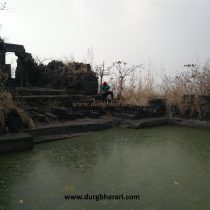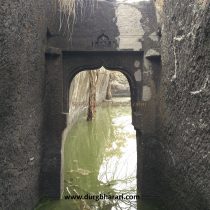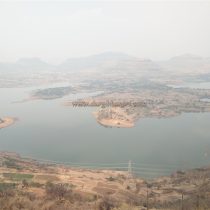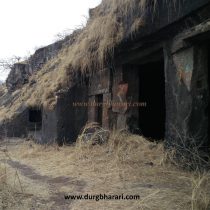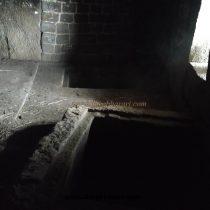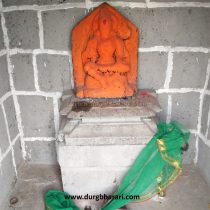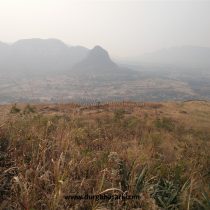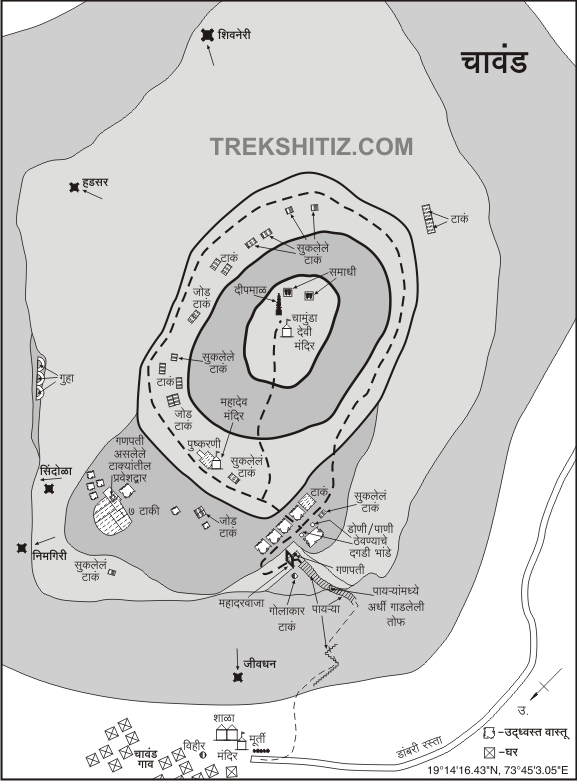CHAWAND/PRASANNAGAD
TYPE : HILL FORT
DISTRICT : PUNE
HEIGHT : 3500 FEET
GRADE : MEDIUM
The Satvahana kings were the first known dynasties in Maharashtra. A closer look at the history reveals that the Satvahana kings were mentioned in the inscriptions in the caves of Naneghat two thousand years ago. Naneghat, which connects Konkan and the upper part of the wharf, was born during the Satvahana dynasty, and to protect this wharf many forts like Jivdhan, Chavand, Hadsar, Nimgiri, and Shivneri forts were built in the river plains of Kukdi river. At that time, a market was established at a short distance from Naneghat in the village of Jirnanagar i.e. today's Junnar. During the reign of Satvahan, forts were built on the shoulders of Sahyadri in Maharashtra and the whole Sahyadri was adorned with forts. One of these forts is Chavand aka Prasannagad. The fort has many names, some of them are Chamund, Chaund, Chavand the origin of all these names is from the word Chamunda.
...
Since the origin of the name of Chavand is from Chamunda, the seven water cisterns at the same place on the fort are considered to be the Saptamatrukas by many people. Chund is a name given by the Nizamshahi while Prasannagad was given the name by Shivaji Maharaj. To reach Chavand, first reach Junnar from Mumbai or Pune. Chavandwadi is a village at the foot of Chavand fort, 15 km from Junnar. To reach the top of the fort, there is Prasannagad restaurant adjacent to the village and a path beside this restaurant could be seen going to the fort. On the way to the fort, you should fill the water from the hand pump in front of the restaurant because even though there are water cisterns on the fort, the water in them is not suitable for drinking as it is not in use. After leaving this road, the first thing you see is a watchtower built by the forest department and a shelter for the tourists. The forest department has built new steps to reach the fort from here. After climbing about 300 steps along this path, you come across small narrow steps carved in the rock. These steps are lined with iron bars for safety purposes. The British attacked Chavand on May 1, 1818, and demolished the steps. Even today, you can see traces of landmines as you climb the stairs. After climbing about 15 steps, you can see old cannon buried by a fort lover so that people could climb this path with the support of this cannon. In the past, people used to climb this path with a rope tied to this cannon. The cannon is about half a foot in diameter, 3.5 feet long, and has a surface area of about one and a half feet. After climbing 50-60 carved and built steps which are 10 feet long and 1.5 feet high, the ramparts of the fort come to the fore. A vertical path has been carved through the gorge where water from the top of the fort descends. Considering the similarities between the entrance of this fort and the entrance of Hadsar and Jivdhan forts, it seems that all the three forts were built during the Satvahana period during the same reign. The gate of the fort is built at right angles with fortified steps and a bastion is built on the right side of the road to protect the gate. Therefore, even if we come up or down the stairs, the gate of the fort is not visible. The gate of the fort is facing south and this weakened gate is supported by iron pillars. On the right side of the door are a carved stone and two idols of Ganapati's on the stone arch of the door. The upper part of this door has a barrage for firing guns and also to keep an eye out on the area in front of the door. After enting through this door you can see a staircase. After climbing these steps we reach the head of the fort. On the left side of the steps is the path leading to the ramparts and on the right side, the path leads to the circular hill in the center of the fort. Chavand fort is 3500 feet above sea level and is spread over an area of 85 acres from south to north. There are six bastions in the fort and the ramparts of the fort have been constructed by carving a trench in the rock. On the way to fort hill, i.e. on the way to the citadel, after climbing 10-12 steps, you can see a large number of ruins. Due to a large amount of grass growing in this area, these remains cannot be seen clearly. There are about 15 to 20 quadrangle structures of buildings here and the remains of the fort and the citadel can be seen in it. The walls, floors, and door frames of some of these structures still survive today. On the right side of the road, near the quadrangle structure of a building, there is a water cistern with steps carved inside it and some stone basins for storing water. There are two stone restrooms here, one inside a mansion on the left side of the road and the other can be seen behind the mansion. Seeing all this, first of all, go to the citadel of the fort. Considering the size of the fort and 29 water cisterns, there should have been a huge settlement on the fort. There is a newly built small temple of Goddess Chamunda on the fort and there is a small stone Deepmal in front of the temple. The idols in the temple seem to be of recent times. Remains of an old carved temple can be seen scattered all over the temple premises. Standing in the temple precincts, you can see all the remains present on the Machi and you might get an idea of exactly which remains you want to see. Looking from here, one can see Bhatoba, Navra-Navri Sulke, Manikdoh, and Kukdi reservoirs as well as Sahyadri ranges spread over Shivneri, Jivdhan Nimgiri, Hudsar, Sindola, and Junnar talukas. After descending from the citadel and coming to the original path, you can walk around the citadel from the path on the left side. While walking along this path, there are no relics but a total of 18 water cisterns can be seen here. About 80 percent of the tour of the fort is completed here.A little further along this path you can see an ancient ruined temple of Lord Shiv and a carved pond in front of the temple. The lower part of the door plate of the sanctum sanctorum of this ancient Shiv temple remains and only the arch of the prayer hall is in front of the sanctum sanctorum exists. At the rear of the sanctum sanctorum, there is a joint cistern carved into the rock, and the built-up decorated well at the front has a few steps and fourteen corners. Three or four of these corners have broken idols and the rest are empty. In front of the temple, there is a broken Nandi on the side of the decorated well. The decorated well on Harishchandragad and the well here are somewhat similar. The temple may have been built by the Shilahar kings around 750 AD. Although today, the temple has been completely demolished, the surrounding ruins and stone carvings hold us back for a while. A path can be seen on the right side of the fort from the Shiv temple. The stone that came out of the excavation of seven ponds must have been laid out for construction here. Here, seven such ponds are carved in a wide rock in a circular structure. There are steps to the west to descend into the pond and a door is carved in the rock at the end of these steps. Ganpati is carved in the arch of this door and there are stone notches on both sides of the arch to fit the wooden door. This part of the fort has a lot of ramparts and there is space to walk along the ramparts. There are 6-7 ruined structures in the surrounding area as well as 5 water cisterns on the hill slope. Where the ramparts have collapsed, there are piles of stones. On the right side of the lake, from where the ramparts end, a path can be seen descending under the ramparts. There are 15 steps carved in the rock and there are 4 carved caves in the area below. It looks like a watchtower or ammunition depot. The caves here are in good condition and one of the caves has two cisterns of 5 feet depth on each side. If you want to stay at the fort, these caves can accommodate 15 to 20 people. The other part of the fort is covered with ridges and this area is deserted due to a large amount of forest. Other parts of the fort are sparsely fortified. It takes 5 hours to walk around the entire fort from the foothills. Chavand aka Prasannagad has a long and ancient history of Satvahan, Bahamani, Nizamshahi, Adilshahi, Mughal, Maratha, and English. The fort was built during the Satvahana period to protect the trade route from Naneghat. Malik Ahmed, who established Nizamshahi after the fall of the Bahmani Empire in 1485, captured the northern Konkan and Pune provinces. Some of the forts which did not easily surrender before Malik Ahmed were Chavand, Lohgad, Tung, Koari, Tikona, Kondhana, Purandar, Bhorap, Jeevdhan, Muranjan, Mahuli, and Pali. Chavand is one of the forts conquered by Nizamshah Malik Ahmed in 1487 in Pune province. He also got a lot of loot from this fort. After conquering Shivneri, Malik Ahmed handed over the management of the chund fort to one of his chiefs and marched towards Lohgad. During the reign of Murtaza Nizam Shah between 1565 and 1588, his Wazir Khanekhan Maulana Hasan Tabrizi was imprisoned on this fort. He was later released through the mediation of changij Khan. Asad Khan another Wazir of Murtaza Nizam Shah, was also imprisoned at this fort for some years. Ibrahim Nizamshah was shot in the head and killed while fighting Adilshah's army. Nizamshahi Wazir Mia Manju freed Ahmed from captivity in Daulatabad and set him on the throne. At that time, they imprisoned Ibrahim's young son Bahadur Shah in Chavand. Bahadur Shah (1594-1595) was imprisoned on this fort for a whole year. Later, when it was known that Nizamshah was on the throne is duplicate, Nizamshahi Sardar Ikhlas Khan sent an order to the fort chief of Chavand to hand over Bahadur Shah to him, but the fort chief informed that this was not possible without the order of Mia Manju. Ikhlaskhan appointed a random person as fake Bahadur Shah. Mia Manju called Murad, Akbar's prince for help. Now Mia Manju is remorseful. He appointed Sardar Ansar Khan and Chandbibi as state representatives for the protection of Ahmednagar. When Mia Manju went to Adilshah and Qutbshah for help, Chandbibi killed his henchman Ansar Khan and freed Bahadur Shah from the clutches of Chavand, and proclaimed him as a Sultan. In 1636, according to the treaty made by Shahaji Raje to protect Nizamshahi from Adilshah and Mughals, Chavand was given to the Mughals. The mention of Chavand fort during Shivaji Maharaj’s period is found in the Sanskrit poetry book Parnalparvatagrahanakhyan. Poet Jairam Pinde, the author of this book of poems, mentions Chavand in the 37th verse of the first chapter of the book while describing how Shivaji Maharaj conquered the forts of Mughals and Adilshahis to Vyankoji Raje Bhosale of Thanjavur. The meaning of poetic lines in this book is that Chamundagiri (Chavand), Harishchandragad, Mahishgad (?) And Hudsar (forts) were captured by Shivaji Maharaj with bravery. When Shivaji Maharaj conquered Chamundgad in May 1672, it must have been renamed Prasannagad. When Aurangzeb came to the south in 1694 to conquer the Swarajya, his army conquered the fort during the reign of Chhatrapati Rajaram and appointed Suratsingh Gound as the fort keeper, but the fort was recaptured by the Marathas. After that Gajiuddin Bahadur captured this fort. Later, during the Peshwa period, the fort came under the control of Marathas. It is mentioned that during the reign of Madhavrao Peshwa in 1785-86, the Peshwa's prison was on this fort. On 25 April 1818, the British captured Junnar and sent a detachment to Chavand. On May 2, 1818, the British ordered the fort of Chavand to be handed over to the British, but the fort chief refused. The British fired 100 artillery shells at the fort, forcing the fort keeper to surrender. When the British took control of the fort, they destroyed the steps by planting a mine on the way to the fort.
© Suresh Nimbalkar

